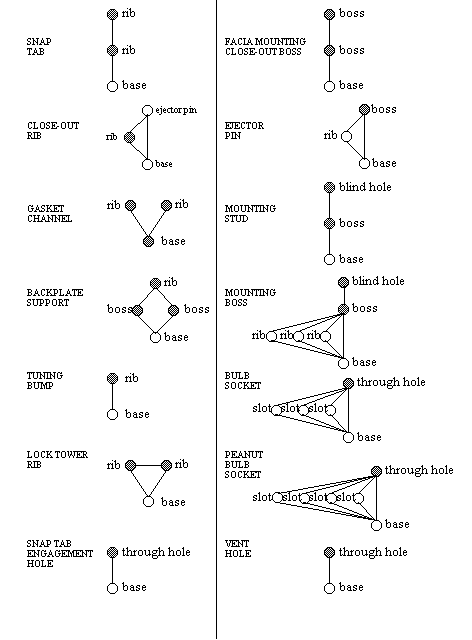6.2 FEATURE SPECIFICATION
6.2.4 ATTRIBUTES
Figure 66 illustrates a set of topology templates for the recognition of complex features. While many of the topologies are unique, topology is not enough to differentiate complex features from one another. Feature identification not only relies on the feature graph itself, but depends on the values of certain feature attributes as well. Further differentiation depends on either relative or absolute geometric and contextual attributes. For example, the template required to identify a snap tab is a topology isomorphic to the template used to identify a welding bead. The welding bead however, can never exceed a certain height. The constraint placed on the height parameter aids in the bead's identification.
As evidenced with the welding bead, the distinction between attributes required for feature evaluation and those required for feature recognition can become blurred. If a given design violates a geometric constraint, as, for example, possessing a welding bead which is too tall, a form may not be recognized for the feature it is. As a result, the feature will not be evaluated at all and the constraint violation will not be detected.
Two classes of attributes are proposed as necessary in an adequate recognition of complex features. They are feature attributes, which refer to the geometry of the form, and link attributes, which address topology and contextual attributes. Contextual attributes provides a global, as opposed to a template-by-template, perspective to the recognition process. A modeling system must take into account these attributes and provide facility to deal with them directly.
Figure 66 Some Complex Feature Templates
